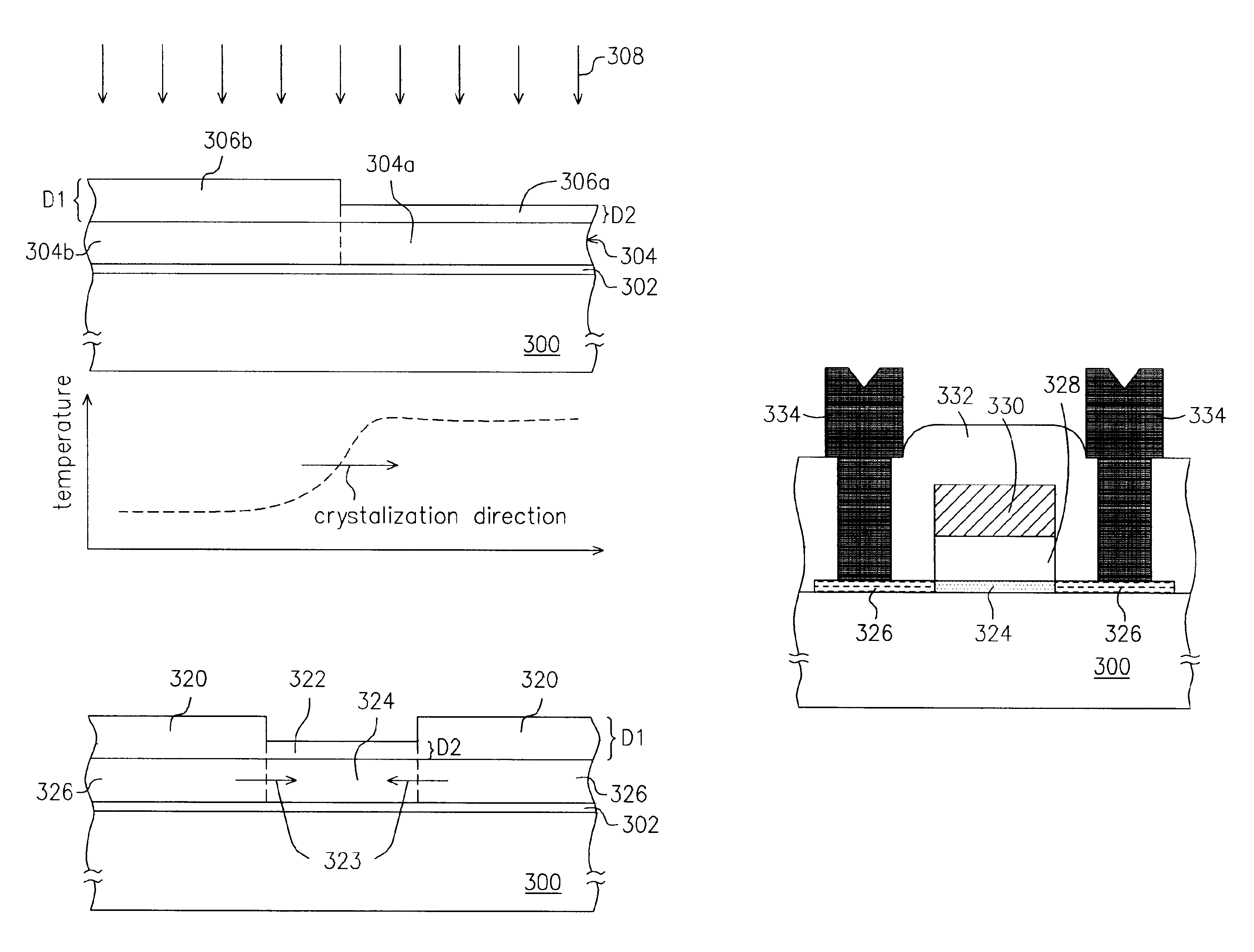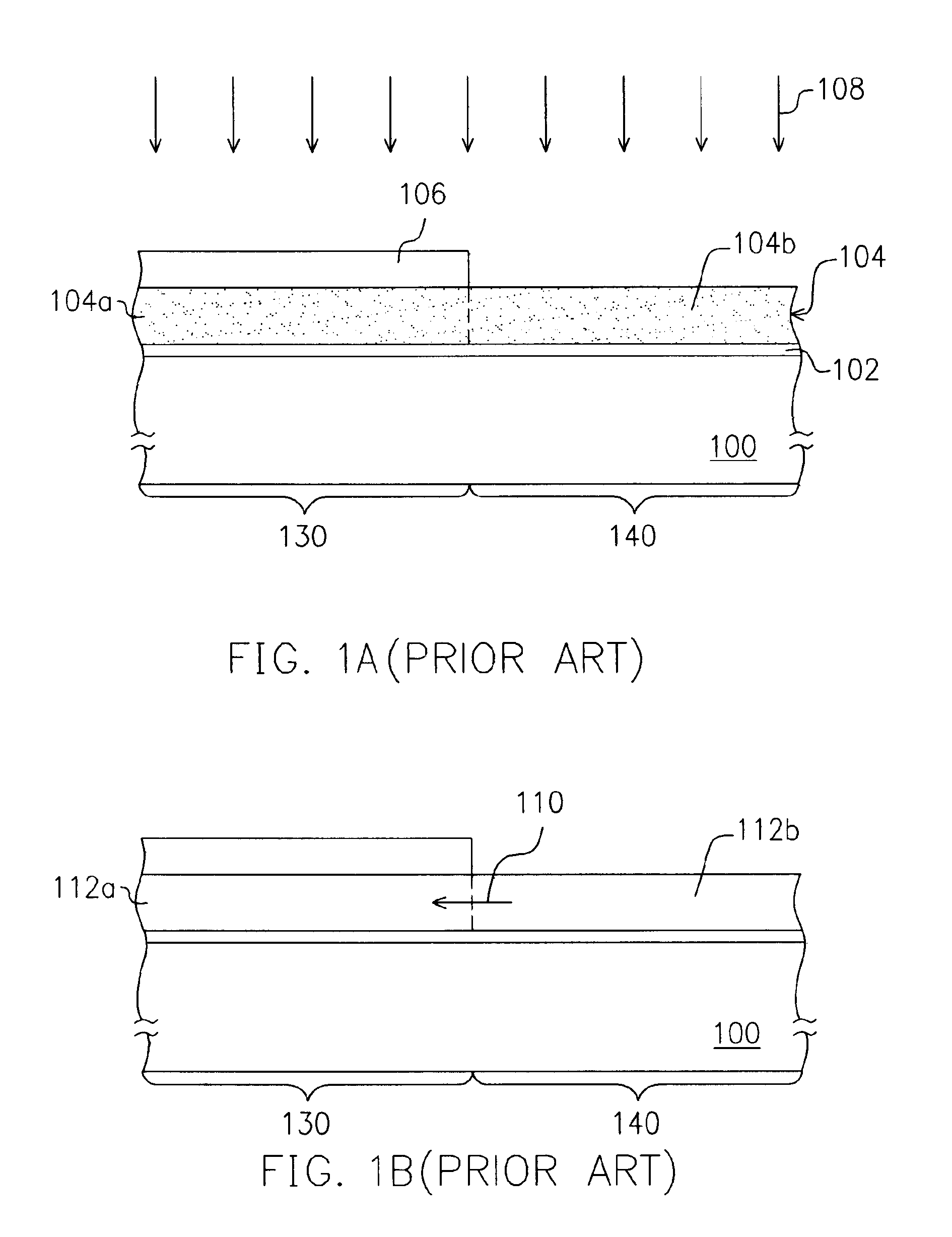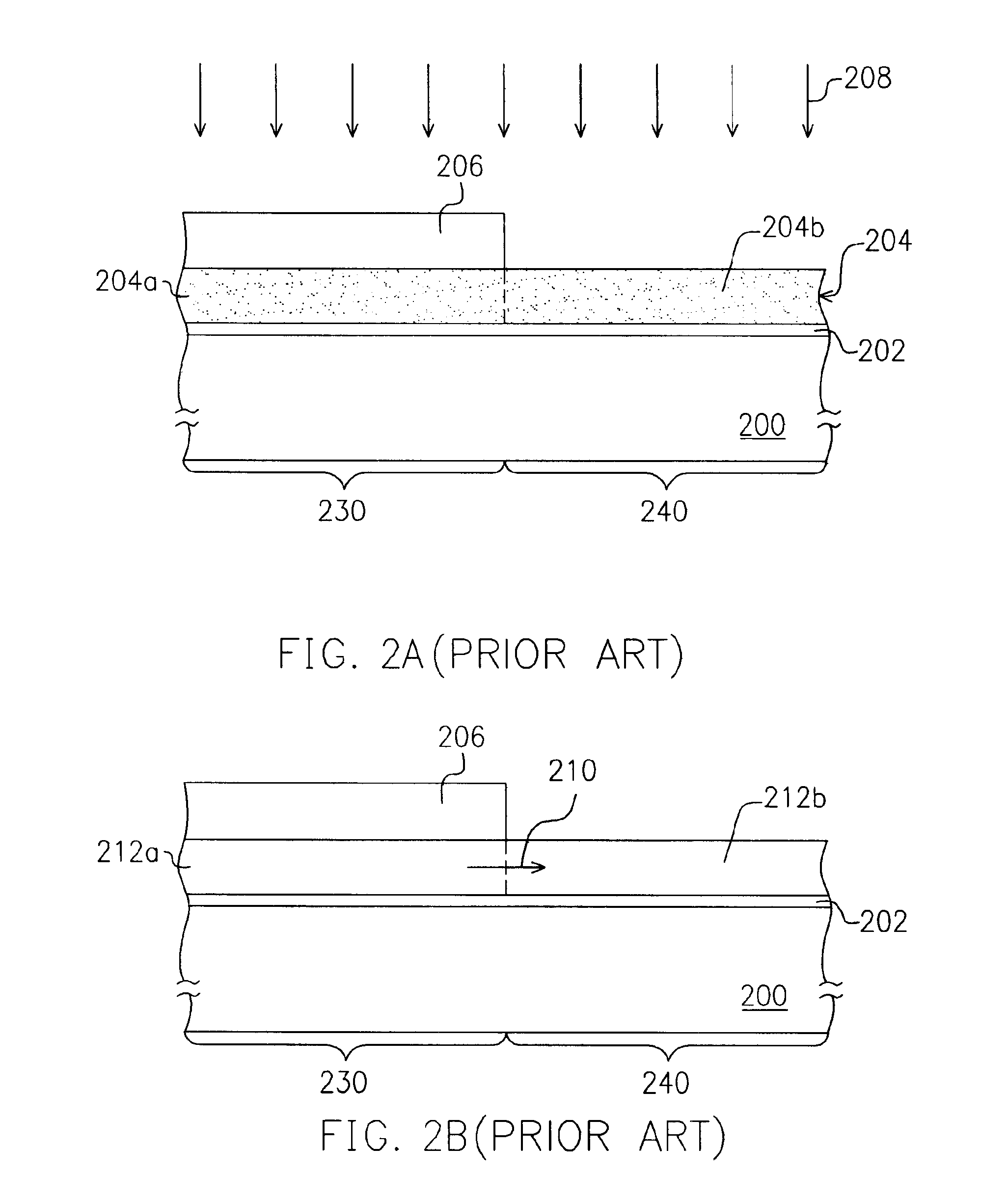Method of fabricating polysilicon film
a technology of polysilicon and film, applied in the direction of semiconductor devices, electrical apparatus, transistors, etc., can solve the problems of adversely affecting the crystallization of thin films, and achieve the effect of increasing the silicon grain siz
- Summary
- Abstract
- Description
- Claims
- Application Information
AI Technical Summary
Benefits of technology
Problems solved by technology
Method used
Image
Examples
Embodiment Construction
[0028]FIGS. 3A-3E are cross-sectional views illustrating a method of forming a polysilicon film according to a preferred embodiment of the present invention.
[0029]Referring to FIG. 3A, a substrate 300 is provided. The substrate 300 is comprised of, for example, a silicon wafer, a glass substrate or a plastic substrate. An insulation layer 302 is formed on the substrate 300. Preferably, the material of the insulation layer 302 is comprised of, for example, silicon dioxide, and can be formed by performing, for example, a low pressure chemical vapor deposition (LPCVD) process, a plasma enhanced chemical vapor deposition (PECVD) process or a sputtering process. The insulation layer has a thickness of, for example, about 500˜4000 Å. An amorphous silicon layer 304 is then formed on the insulation layer 302, and the amorphous silicon layer 304 can be formed by performing, for example, a LPCVD, a PECVD or a sputtering process. The amorphous silicon layer 304 has a thickness of, for example,...
PUM
| Property | Measurement | Unit |
|---|---|---|
| temperature | aaaaa | aaaaa |
| temperature | aaaaa | aaaaa |
| thickness D1 | aaaaa | aaaaa |
Abstract
Description
Claims
Application Information
 Login to View More
Login to View More - R&D
- Intellectual Property
- Life Sciences
- Materials
- Tech Scout
- Unparalleled Data Quality
- Higher Quality Content
- 60% Fewer Hallucinations
Browse by: Latest US Patents, China's latest patents, Technical Efficacy Thesaurus, Application Domain, Technology Topic, Popular Technical Reports.
© 2025 PatSnap. All rights reserved.Legal|Privacy policy|Modern Slavery Act Transparency Statement|Sitemap|About US| Contact US: help@patsnap.com



